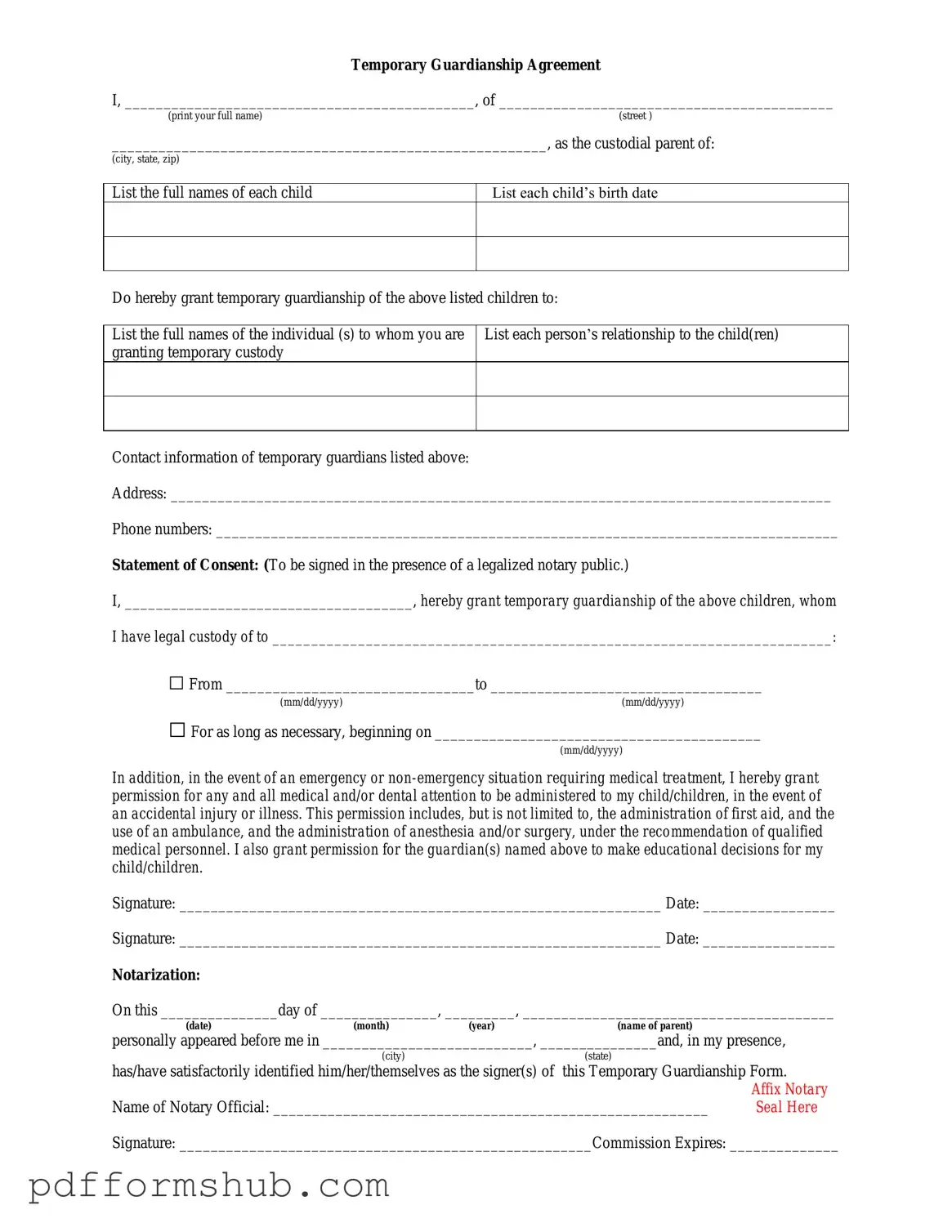Fill in Your Temporary Custody Form
The Temporary Custody form is a legal document that allows one parent or guardian to gain temporary custody of a child, usually during a specific situation or period. This form is essential for ensuring the child's well-being when circumstances prevent the usual custodial arrangement from being in effect. To take the next step, fill out the form by clicking the button below.
Customize Form
